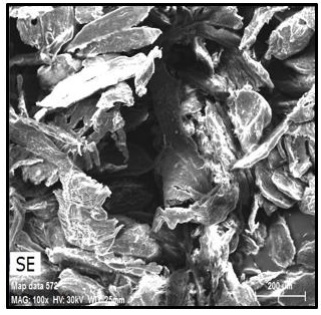The Effect of Recycled CAD/CAM PEEK Fibers on the Transverse Strength of Repaired Acrylic Resin
DOI:
https://doi.org/10.51173/jt.v5i3.1740Keywords:
Acrylic Resin, Denture Repair, PEEK Fibers Reinforcement, Transverse Strength, Dental MaterialAbstract
One of the significant advantages of Polyether ether ketone (PEEK) is its ability to bond composite materials. This makes it a versatile material that can be used in a range of dental applications, including as a framework for fixed or removable dental prostheses. The aim of this study is to evaluate the transverse strength of heat-cured acrylic resin after reinforcing repaired material with recycled PEEK fibers obtained from a CAD/CAM machine. After milling, PEEK fibers were collected from the CAM machine. The size of the PEEK fibers was measured by utilizing a Scanning Electron Microscope (SEM); with the particle grit size being 200 µm. Thirty specimens were used and divided into three groups of heat-cured acrylic resins was evaluated. All specimens have been stored at 37°C prior to fracture, and specimens have been then repaired after fracture with an auto-polymerizing acrylic resin using Ivomet. Group A of heat-cured specimens was used as a (control group) and repaired with no additive to the self-cured acrylic repair materials. While group B has been repaired by self-cured acrylic reinforced with of 1%wt. PEEK fibers, group C has been repaired by self-cured acrylic reinforced with the addition of 2%wt. PEEK fiber. There is a difference between groups A and C; however, there is a significant difference at 0.05 when comparing with groups B and C. When compared to (1%wt. PEEK-fiber) and the control group, adding (2%wt. PEEK-fiber) improves the transverse strength of the repaired heat-cured acrylic resins.
Downloads
References
Salim, A.H. and D.S.A. Muhsin, Effects of Recycling-PEEK Waste from CAD-CAM on Surface Hardness and Roughness of PMMA. Middle Technical University College of Health and Medical Technology, 2020. 7(1). https://www.iasj.net/iasj/download/6e32036627fa7443.
Elgayar, I. and M. Aboushelib, Recycling CAD/CAM zirconia waste powder as reinforcing filler particles. International Journal of Chemical and Applied Biological Sciences, 2014. 1(6): p. 132-132. https://doi.org/10.1155/2014/272750.
Singh, R.D., et al., Mercury and other biomedical waste management practices among dental practitioners in India. BioMed Research International, 2014. https://doi.org/10.1155/2014/272750.
Silthampitag, P., et al., Effect of surface pretreatments on resin composite bonding to PEEK. Dental materials journal, 2016. 35(4): p. 668-674. https://doi.org/10.4012/dmj.2015-349.
Kurtz, S.M. and J.N. Devine, PEEK biomaterials in trauma, orthopedic, and spinal implants. Biomaterials, 2007. 28(32): p. 4845-4869. https://doi.org/10.1016/j.biomaterials.2007.07.013.
Mbogori, M., et al., Poly-Ether-Ether-Ketone (PEEK) in orthopaedic practice-A current concept review. Journal of Orthopaedic Reports, 2022. 1(1): p. 3-7. https://doi.org/10.1016/j.jorep.2022.03.013.
Hovakhti, A., et al., Zirconia recycling and evaluating the effect of wet and dry grinding, with or without heat treatment, flexural strength of this ceramic. Annals of Dental Specialty, 2018. 6(3): p. 250-255. https://annalsofdentalspecialty.net.in/storage/models/article/LaRUPIZe5b1qGxnzi854QHIVylAXUuD23NGOuQiy4DSnPP8Mki1G5xR5rymc/zirconia-recycling-and-evaluating-the-effect-of-wet-and-dry-grinding-with-or-without-heat-treatmen.
Jagger, D., et al., The effect of the addition of poly (methyl methacrylate) fibres on some properties of high strength heat‐cured acrylic resin denture base material. Journal of oral rehabilitation, 2003. 30(3): p. 231-235. https://doi.org/10.1046/j.1365-2842.2003.01011.
ISO, I., 20795-1: 2013 Dentistry—Base Polymers—Part 1: Denture Base Polymers. ISO: Geneva, Switzerland, 2013.
ISO, I., 3310-1: Test Sieves—Technical Requirements and Testing—Part 1: Test Sieves of Metal wire Cloth. ISO: Geneva, Switzerland, 2016.
Shin, S. and R.D. Hryciw, Wavelet analysis of soil mass images for particle size determination. Journal of Computing in Civil Engineering, 2004. 18(1): p. 19-27. https://doi.org/10.1061/(ASCE)0887-3801(2004)18:1(19).
Syngouna, V.I. and C.V. Chrysikopoulos, Transport of biocolloids in water saturated columns packed with sand: Effect of grain size and pore water velocity. Journal of Contaminant Hydrology, 2011. 126(3-4): p. 301-314. https://doi.org/10.1016/j.jconhyd.2011.09.007.
Apimanchindakul, C., P. Na Nan, and N. Aimjirakul, Effect of Reinforced Self-Cured Acrylic Resin on Flexural Strength. International Journal of Dentistry, 2022. https://doi.org/10.1155/2022/2698995.
Faltermeier, D., et al., Bandwidth-controlled Mott transition in κ−(BEDT− TTF) 2 Cu [N (C N) 2] Br x Cl 1− x: Optical studies of localized charge excitations. Physical Review B, 2007. 76(16): p. 165113. https://doi.org/10.1103/PhysRevB.76.165113.
Shihab, R.A. and B.M. Hussein, Effect of certain chemical surface treatments on repair bond strength of some denture base materials. Journal of Baghdad College of Dentistry, 2014. 26(1): p. 53-58. https://www.iasj.net/iasj/download/3893dc1c8df684dd.
Kern, M. and F. Lehmann, Influence of surface conditioning on bonding to polyetheretherketon (PEEK). Dental Materials, 2012. 28(12): p. 1280-1283. https://doi.org/10.1016/j.dental.2012.09.010.
AL-Hashyme, M.A.J.M. and A.W.R. AL-Omari, Evaluating the Effect of Polyetheretherketone Particles Adding on Some Mechanical Properties of Polymethacrylate Denture Base Material. Al-Rafidain Dental Journal, 2022. 22(2). https://www.iasj.net/iasj/download/8d33ab91bafed866.
Gokul, S., S. Ahila, and K.B. Muthu, Effect of E-glass fibers with conventional heat activated PMMA resin flexural strength and fracture toughness of heat activated PMMA resin. Annals of Medical and Health Sciences Research, 2018. 8(3): p. 189-192. https://www.researchgate.net/publication/335338674_Effect_of_Eglass_Fibers_with_Conventional_Heat_Activated_PMMA_Resin_Flexural_Strength_and_Fracture_Toughness_of_Heat_Activated_PMMA_Resin.
Yuliharsini, S., et al., Effect of E-glass fiber addition on mechanical properties of heat polymerized acrylic resin denture base. Journal of Evolution of Medical and Dental Sciences, 2019. 8(12): p. 872-878. DOI: 10.14260/jemds/2019/194.
Jaikumar, R.A., et al., Comparison of flexural strength in three types of denture base resins: An in vitro study. Journal of pharmacy & bioallied sciences, 2015. 7(Suppl 2): p. S461. . doi: 10.4103/0975-7406.163505.

Downloads
Published
How to Cite
Issue
Section
License
Copyright (c) 2023 Maha Kareem Jabbar, Najwah Yousuf Hameed, Rusul Khalid Mustafa

This work is licensed under a Creative Commons Attribution 4.0 International License.
















